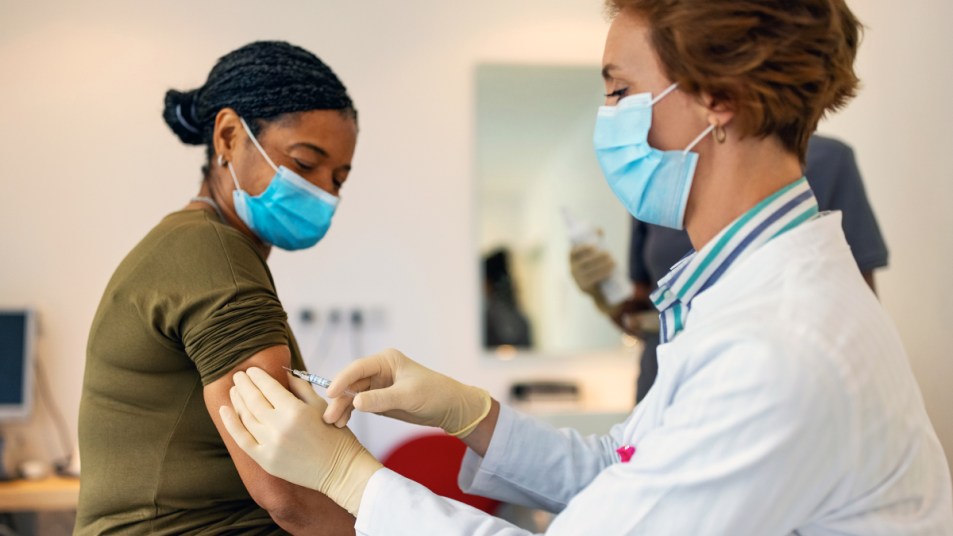How It Really Feels to Get a COVID-19 Vaccine

It’s been an undeniably stressful year, but recent news about COVID-19 vaccines have finally given many of us the glimmer of hope we’ve been waiting for. Of course, we’re also pretty curious about how our bodies might react to the shot. It’s not a magic wand, after all. Here’s what we’ve learned from both those administering the vaccines and those who’ve already received it.
Although there are two different vaccines currently approved by the FDA for emergency use — one produced by Pfizer-BioNTech and another by Moderna (with a little help from Dolly Parton) — both use a new vaccination technology known as messenger RNA, or mRNA. They also both require two shots taken a few weeks apart.
According to the CDC, unlike traditional vaccines which use a fragment or weakened version of the virus they’re trying to prevent, mRNA vaccines don’t contain any part of the virus whatsoever. Instead, they send a message to our cells to create what’s known as “spike proteins,” which our immune systems see and respond to by making the antibodies we need without having to go through the potentially life-threatening health risks that come with contracting the coronavirus.
Despite the different technology behind it, early reports show similar reactions to what we’re used to from the flu shot. The CDC lists the following potential side effects:
- Pain or swelling in the arm
- Fever
- Chills
- Tiredness
- Headache
Not much different than any other vaccine, right? For those wanting a more personal insight, a man named Yasir Batalvi, who was part of the clinical trials for the Moderna vaccine, talked to CNN about his experience. He said the first shot felt like a pinch in his arm and caused some soreness. “It was definitely manageable, but you kind of don’t really feel like moving your arm too far above your shoulder,” he explained.
After the second dose, however, Batalvi said he developed a low-grade fever, chills, and fatigue — but the study doctors told him not to be alarmed and that it was actually a sign the vaccine was doing exactly what it should. By the next morning, Batalvi said he felt “ready to go” about his normal daily routine.
That said, even if you don’t feel these side effects from the vaccine, it doesn’t mean it’s not doing its job. In fact, John Hopkins University reports that individuals over 55 were far less likely to have any adverse reactions to the shots during clinical trials.
There have been a few cases of allergic reactions, but they are extremely rare and, again, always a potential for any vaccine. These usually occur quickly after a dose is given, which is one of the reasons doctors usually have people wait for about 15 minutes after getting the shot. Some have also felt faint or lightheaded, but that seems to be more about an aversion to needles than the vaccine itself.
It’s still early days, but we certainly hope the most lasting reaction to COVID-19 vaccines over the next few months will be a lot less health scares, far more peace of mind, and quite a few extra hugs between loved ones.












